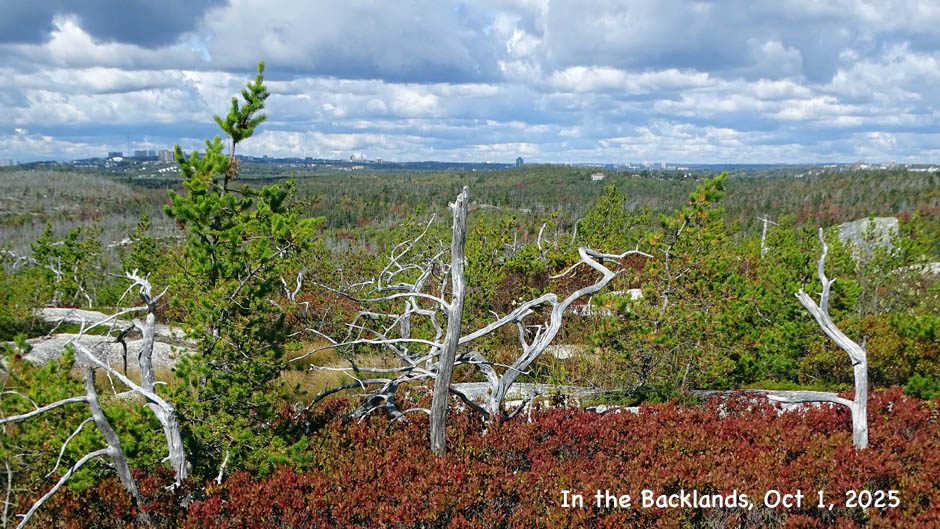In regard to the types of forests in the Backlands, in our study of the Williams Lake Backlands (now the Shaw Wilderness Park), Nick Hill and I distinguished 5 forest types in the uplands:
– Jack Pine/Broom Crowberry Barrens (equivalent to NSFVT OW1)
– Red Pine-Jack Pine/Broom Crowberry Coniferous Woodland (equivalent to NSFVT OW4)
– Paper Birch–Red Maple–Big-toothed Aspen Early Successional Forest (equivalent to NSFVT IH6)
– Red Oak–Red Maple/Witch-hazel Hardwood Forest (equivalent to NSFVT IH2)
– White Pine-Red Pine-Red Oak Mixed Forest (equivalent to NSFVTs SP3 and and SP4)
These classifications probably apply broadly to most of the Backlands. One area where more documentation is definitely required: the forests in the lower MacIntosh Run area, some of those forests, quite wet.
Putative tree species composition of Backlands forests is given on the NS Landscape Viewer; some screen captures are provided on this website under Flora, Fauna & Geology – DNRR Maps.
Is there ‘Old Growth’ is the Backlands?

Forest Development Class in
The Backlands
Older trees and patches of Old Growth
may occur some of the areas designated
as in Mature or Multi-aged/Old Forest
development classes.
It’s a question I am frequently asked. My thought: probably none of the forest stands in the backlands would meet the DNRR criteria for classification as Old Growth. There may be patches of Old Growth in some of the wetter areas that have not burned within the last 100+ years and have not been logged; some such patches, except for their size and/or local anthropogenic disturbance or proximity to settled landscape, probably would meet the criteria for Old Growth. But overall, significant stands of Old Growth would not be expected on this very fire-prone landscape.
Outside of those wetter areas, however, there are Old Trees notably some red oaks, white pines and red pines that were big enough to have survived past fires; now landscapes with those old trees have some components of Old Growth (such as large snags and fallen dead trees) and provide habitat for many Mature Forest bird species* observed in the Williams Lake Backlands by Fulton Lavender and Joshua Barss Donham such as Hermit Thrush, Ovenbird, Golden-crowned Kinglet, Hairy Woodpecker.
*See Betts et al., 2022
But even without a lot of forest that would qualify formally as “Old Growth” there’s a lot that make the Backlands a very significant landscape ecologically!
———-
Page posted by David Patriquin, Sep 23, 2022

